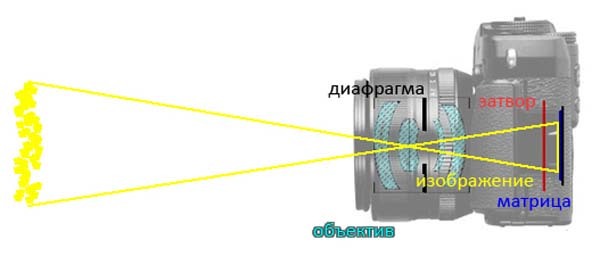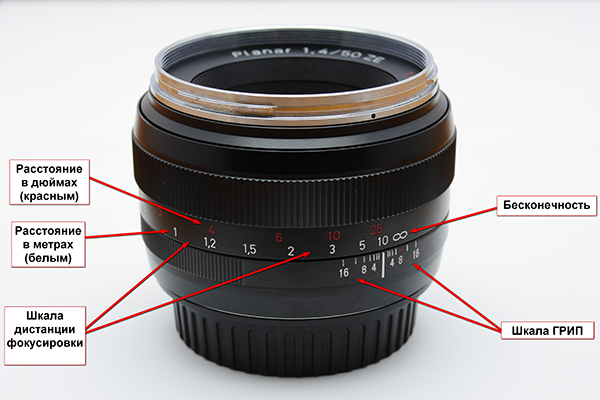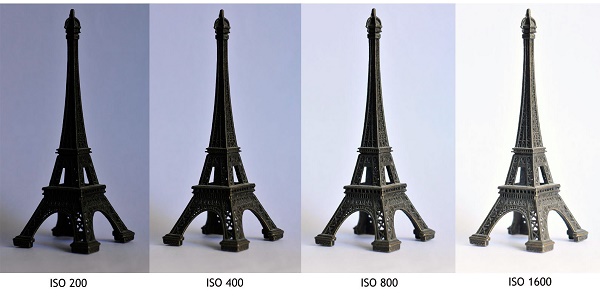Basic camera settings
Different models of photographic equipment have different settings. In budget devices, the choice of shooting modes is minimal. The semi-professional and professional-level camera settings are broader, which allows high-quality shooting in any lighting conditions.
Content
The principle of operation of a digital camera
The term photography is commonly understood as fixing a visible picture of reality by means of light. The main elements for obtaining an image are the lens, through which light enters the camera, the opening / closing shutter in front of the light-sensitive receiver and the light receiver itself.

The film was used as the last element in the film apparatus, the matrix was used in digital technology.
The model range of cameras according to the principle of image formation is usually divided into mirrorless deviceswhich, because of the simplicity and affordability, are popularly called “soap cases” and “reflex cameras” (SLR cameras). The main difference between these devices is the presence of the latest special mirrors, due to which the photographer sees the captured image on the camera screen without a delay, which is not available when using the “soap box”.
The main parameters that a photographer has to manipulate for shooting in various conditions include:
- exposure,
- DOF,
- focusing,
- matrix photosensitivity (ISO),
- white balance.
All these parameters are closely interrelated, and for high-quality shooting it is important to set them up correctly. Professionals and novice photographers have to shoot in different environments: to shoot moving or static objects, the illumination may vary depending on weather conditions or the time of day. Therefore, it is important to know the capabilities of the camera and the features of its settings for working in various conditions, for example, for shooting indoors.
Digital Photography Setup Tools
The main problems that have to be solved by a novice user of advanced photographic equipment are to study and use customization tools:
- for subject shooting;
- for shooting landscapes, nature, birds and animals;
- photo reports from sporting or cultural events;
- for shooting in the studio and other photographs.
It is important to know the concept of "exposure" - it determines the amount and time of exposure of the light flux to the matrix. The exposure adjustment tools are shutter speed and aperture. And the first step in finding the answer to the question of how to set up a camera is to understand the manipulation of these parameters.
Exposure
The shutter speed determines the time that light with an open curtain acts on the matrix. During this time, the light passing through the lens and the open shutter, the image is recorded on the matrix. The shutter opens when the start button is pressed. Exposure time varies, depending on shooting conditions. short or long. The parameter is denoted in numeric format: 1/500 second, 1/8000 second, for example.

Adjusting Canon EOS 600D Exposure
For shooting dynamic moments, such as athletes in motion or birds in flight, a short exposure is applied.It is recommended to adjust the equipment for a long shutter speed in the case of shooting in poor light conditions.
In the semi-professional and professional models of manufacturers such as Sony, Canon, Nikon, Samsung, in addition to various automatic modes of scene shooting, there is a manual shutter speed setting mode.
Diaphragm
The shutter speed is closely related not only to light conditions, but also to another adjustable parameter — the aperture, which determines amount of light. The diaphragm is a mechanical part of the lens in the form of varying in size petals with a hole in the center. Regulation of the size of these petals is achieved by increasing or decreasing the opening for the luminous flux, which in turn determines the amount of light that contacts the matrix. The aperture is also denoted by the symbol “f” with the number: f5.6, f16, for example. The higher the numerical value of the aperture, the smaller the hole formed for the light flux.

Proper exposure implies the optimal choice of shutter speed and aperture for certain conditions. For studio shooting, these will be some parameters, and for shooting on the street - others.
The aperture size of the diaphragm is closely related to the depth of the sharply depicted space (DOF), and that, in turn, with focusing.
Focus and DOF
A common technique in photographing, when the object to be removed is selected as the center of maximum focusing (focus). Focusing the depth of field on a subject is called focusing.
Cameras and cameras on the phone are usually equipped auto focus. Technique professional level in addition to the automatic mode is equipped with the ability to adjust the depth of field and focus manually. The technical solution can be different: a mechanical or electronic method of focusing is used. The control is performed both by pressing a certain button, and by rotating the focus ring of the lens.

ISO matrix
The setting of the exposure frame is also affected by a parameter such as the ISO matrix. At film devices, the parameter was expressed photosensitivity filmmarked with 100, 200 or 400 on the box. In digital devices, ISO can be configured for each individual frame. This parameter is relevant for setting up a SLR camera, since this technique is used in different shooting modes. So, for photographing landscapes, it is optimal to set a value of 1600, in portrait work 3200, and for subject photo reports the value can reach 6400. In the semi-professional technique, values from 100 to 1600 are most often used.

White balance
Any lighting conditions have their own temperature, and this fact explains such a thing as warm and cold shades of light. In order for the photo to be as close to reality as possible in the display of colors, it is important to track down and adjust the “white balance” parameter. Otherwise, with the same settings in different situations, spoiled images can be obtained with a predominance of red or blue hues.
Before shooting, setting the white balance is recommended by white sheet of paperWhich should also be displayed on the viewing screen of the camera. If necessary, the temperature in the setting can be increased or decreased in order to achieve the desired result.
In conclusion, we note that the manual settings of the professional apparatus are carried out through the PASM modes.

/rating_off.png)











